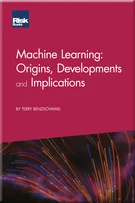Outlining the most impactful assumptions and challenges under CECL: an auditor’s view
Benjamin Havird
Introduction
An overview of CECL: setting the context
Outlining the most impactful assumptions and challenges under CECL: an auditor’s view
Outlining the most impactful assumptions and challenges under CECL: a banker’s view
A banking industry perspective on key CECL decisions
Challenges and solutions for wholesale portfolios
Challenges and solutions for retail mortgage portfolios
Challenges and solutions for retail credit card portfolios
Challenges and solutions for student loans
Challenges and solutions for securities portfolios
The evolution of purchased loan accounting: from FAS 91 to the CECL transition
Challenges and solutions for qualitative allowance
Challenges and solutions: an auditor’s point of view
Early view of CECL integration into stress testing: practical approaches
Too many cooks in the kitchen: mastering the art of managing CECL volatility
Beyond CECL: rethinking bank transformation
Data collision: efficient lending under CECL
Cutting through the hype: how CECL is impacting investor views of procyclicality, credit analysis and M&A
Concentration risk: the CECL magnifying glass
Closing thoughts
Allowance for loan and lease losses (ALLL) has been a lightning rod for companies, their auditors and regulators alike, particularly since the global financial crisis of 2007–09 and the recovery that followed despite US generally accepted accounting principles (GAAP) and banking regulations have remained relatively unchanged for several decades. However, the financial crisis clearly highlighted the “too little, too late” concerns, with the incurred loss framework driving a call for change.
The backward-looking nature of the incurred loss framework, or more specifically its inability to incorporate forward-looking views, was metaphorically similar to driving down a road using only your rearview mirror. In the same way, trying to distinguish between “incurred” losses and “future” possible (or even probable) losses was often difficult in practice. There was a general consensus that change was needed to reflect a view of losses that was at least forward-looking. To that end, efforts to reform financial instrument accounting arguably began in 2002 with the Norwalk Agreement (FASB and IASB, 2002) between the International Accounting Standards Board (IASB) and the Financial Accounting
Copyright Infopro Digital Limited. All rights reserved.
As outlined in our terms and conditions, https://www.infopro-digital.com/terms-and-conditions/subscriptions/ (point 2.4), printing is limited to a single copy.
If you would like to purchase additional rights please email info@risk.net
Copyright Infopro Digital Limited. All rights reserved.
You may share this content using our article tools. As outlined in our terms and conditions, https://www.infopro-digital.com/terms-and-conditions/subscriptions/ (clause 2.4), an Authorised User may only make one copy of the materials for their own personal use. You must also comply with the restrictions in clause 2.5.
If you would like to purchase additional rights please email info@risk.net











